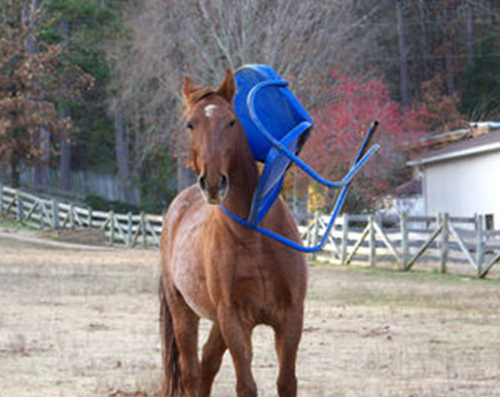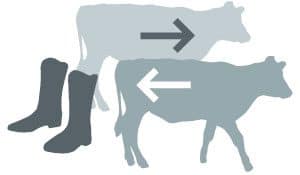 In my experience, people spend a lot of time worrying about things that they can do to keep their horse(s) in the best health possible. Of course, that’s completely understandable; people invest a lot of time, effort, and money into these very special animals. However, after all of these years in horse practice, two things perplex me:
In my experience, people spend a lot of time worrying about things that they can do to keep their horse(s) in the best health possible. Of course, that’s completely understandable; people invest a lot of time, effort, and money into these very special animals. However, after all of these years in horse practice, two things perplex me:
- People spend money on lots of needless things that cost a lot of money
- People don’t do some very easy and inexpensive things that don’t cost much of anything, but are very important
There seem to be a limitless number of items that fall into Category 1, many of which are heavily advertised: some even prescribed. Today, it’s time for Category 2. Let’s address five simple things that anyone can and should do to help keep their horses from getting sick. After all, “An ounce of prevention is worth a pound of cure,” right (Benjamin Franklin first said it, in case you wondered)?
Most people keep their horses around other horses, at least eventually (at a show or something). So, even if your horse spends most of his time by himself – which is not that common, and, given that horses are herd animals, and love being around other horses – he’s probably going to be around other horses at least sometime. For horses, being around other horses, for horses, is like sending your kid off to school for the first time. Sure it’s great and exciting and fun and a new experience and all, but it’s not too long before your kid comes home with a runny nose and the whole family has a cold.
The fact of the matter is that there are lots of germs out there – bacteria and viruses, mostly, but also things we don’t think about much, like fungal skin infections. that are only two happy to move from person to person. It works exactly the same way in horses. But you can – and should – do these five very simple things to help keep your horse healthy. Cuts down on veterinary visits, too!
AVOID DIRECT HORSE TO HORSE CONTACT
Sure, there are plenty of dangerous things in your horse’s environment. Wire fences. Potholes, Traffic cones. Small puddles that could be 20,000 feet deep (you never know). But insofar as your horse’s health goes, one of the most threatening things out there is another horse. Each horse is it’s own germ station, and all sorts of microorganisms happily live on and in him. Horses are only to happy to share those microorganisms: muzzling, and sniffing, and pushing, and blowing and… well you get the idea. It’s like the first day at school with kids, and for horses, it’s like that pretty much every day.
So, tip #1 is to keep your horse from direct contact with other horses. That’s not just for your horse – it’s for the other horse, too. Your horse is just as likely to carry something as is the other horse. Of course, this is especially important if a horse is sick, but even apparently healthy horses can be carriers (that’s one reason why, for example, “strangles” is so hard to get out of the horse population).
ASIDE: In a stable population of horses, say, one where several horses are kept together in pasture, they’ve pretty much shared their germs, just like kids in school. It’s new horses coming in, or when the pastured horses go out, that things get a bit more risky.
CHECK YOUR HORSE DAILY AND TAKE HIS TEMPERATURE
Usually, people have a pretty good idea when something is seriously wrong with their horse. But infectious diseases – the sorts of things that it’s really worth taking the time to try to prevent – don’t always start by showing up as a serious problem. You want to check him regularly.
Make sure he’s eating. Make sure he’s drinking. Make sure there’s nothing obvious. And take his temperature, too. It’s not hard – in fact, I’m constantly amazed that 99% of the horses don’t seem to mind having a thermometer put where the sun doesn’t shine. There are tutorials on how to take your horse’s temperature on-line – no reason to belabor the point. Just do it (and your veterinarian will be impressed when you all with that information, too).
AVOID HORSE-TO-HUMAN-TO-HORSE CONTACT
You can be part of the problem, too. You can be a fomite. Germs aren’t picky about who or what carries them between horses. So, if you’re moving from horse to horse, take some time to clean off your shoes between stalls or paddocks. Wash your hands before going from one horse to another. Use disposable gloves if you’re handling stuff that looks icky and then throw the gloves away before you go to the next horse and put on another pair. Your sleeves, jacket, shirt, pants… just about anything can carry infectious material from one horse to another. Be careful and be clean – it will help prevent disease transmission between horses if you’re dealing with sick ones, and it will help keep the healthy ones healthy.
AVOID SHARING EQUIPMENT UNLESS YOU THOROUGHLY CLEAN AND DISINFECT IT BETWEEN USES
I, for one, am not one who generally recommends that people invest their money in custom equipment for each and every one of their horses. It gets to be pretty expensive, and keeping track of everything can be challenging. That said, if you use equipment such as brushes or curry combs on more than one horse, make sure you take the time to clean them between horses. Obviously, you want to get rid of easily seen debris, but germs aren’t quite so apparent. Take the time to dip your grooming equipment in a disinfectant solution such as dilute bleach between horses; the last think that you want to do is spread organisms that can cause skin infections. Saddle pads, too – they’re great for spreading skin problems. A little common sense can go a long way.
AVOID THE USE OF COMMUNAL WATER SOURCES
 Do your family eat off of the same plate at dinner? Is there one, big glass for the table? Do you share napkins? I think you get the point.
Do your family eat off of the same plate at dinner? Is there one, big glass for the table? Do you share napkins? I think you get the point.
The reason we don’t do that, of course, is to try to keep from passing germs. Who wants backwash in their glass? And it’s the same thing for horses. Although there’s nothing more convenient than one big water trough for a big bunch of horses, it’s also one of the most common places from which disease can spread. One sick horse that drags his snotty nose around and through a watering trough can get the whole bunch sick pretty quickly; nothing like moisture to help germs persist in the environment.
Of course, if you have control of the horses on your property, and no new horses are coming in, there’s no reason at all to completely avoid having a common water source. But if you’re going off property, bring a bucket. It will help your horse’s health in the long run.
None of this should be particularly controversial and all of it is pretty easy to do. Good hygiene goes a long way to keeping your horse healthy. Make sure you’re not part of the problem.











